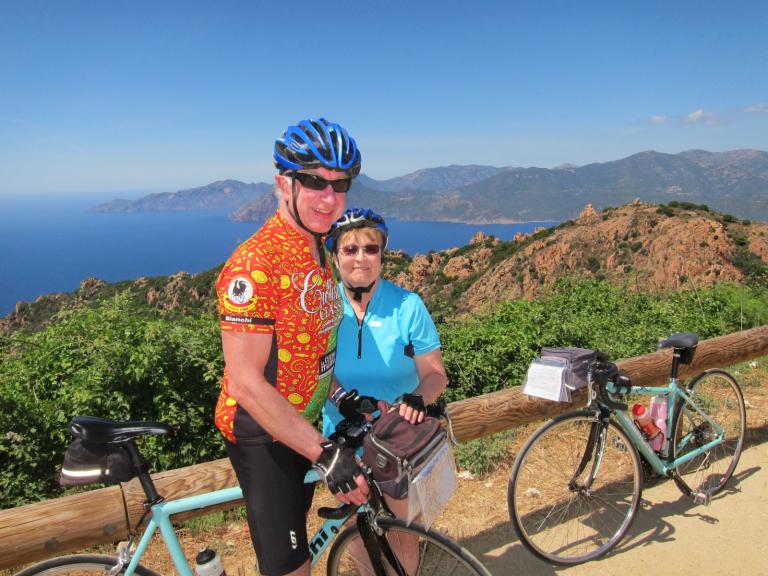
“Some of the more interesting renewable energy projects we have worked on are referred to as cow-power projects.”
The pursuit of innovative engineering, adventure and skiing has led Ed Pearson ‘67 all over the country and the globe.
“We’ve always enjoyed traveling and adventure going all the way back to years at General Motors Institute (now Kettering University) and even before that,” Pearson said.
Pearson and his wife have biked across Italy, in wine country along the coasts of Chile and California and completed many other domestic and foreign trips on two wheels. Pearson has allowed the same adventurous spirit to guide his professional life as well with experiences that have spanned the country in many different fields.
Currently, Pearson and his nine-person consulting engineering firm, Pearson & Associates, in Stowe, Vermont, is working on a number of interesting projects, including an ice climbing wall for the National Guard; a brewery in Vermont to brew Austrian-style lager for the Trapp Family (of Sound of Music Fame); a processing plant for Vermont-made Italian tomato sauce; a sports facility for a ski academy and a number of renewable energy projects.
“Some of the more interesting renewable energy projects we have worked on are referred to as cow-power projects,” Pearson said.
A Green Mountain Dairy generator.
Cow Power is a renewable energy system that deals with the treatment of dairy cattle wastes. Unprocessed cow manure is collected in a receiving pit and pumped to an anaerobic digester where methane gas is collected and sent to an engine (or generator) where both heat and electric power are produced. The heat is captured for farm use and for operation of the anaerobic digester. The electricity is also used for operation of the anaerobic digester and the excess electric power is sold to the utility company.
Pearson works with dairy farmers who milk upwards of 2,000 cows daily. Pearson helped design the electrical infrastructure for the digester and generators that connects with an electric utility grid and allows farmers to sell electricity.
“Once the manure goes through the digester, it pretty much loses all of its odors and is pumped to a separator for recovery of coarse solids from the digester effluent.” Pearson said. “Then the farm can use the liquid as a fertilizer for their fields and the dry leftover parts as a mulch or as bedding for the cows.”
Pearson’s journey to renewable energy projects spans multiple decades and states but begins at Kettering University.
From Oil to Renewables
Pearson graduated from Kettering (then General Motors Institute) in 1967 with a degree in Mechanical Engineering. Upon graduating, went to work full-time at his co-op employer, Fisher Body in Syracuse, until 1972.
“The co-op program allowed me to help pay for college,” Pearson said. “It was a great experience working with a number of different of departments at Fisher Body. Everything from accounting to the tool room, to production and engineering - it gave me very valuable background that complemented my in-class education.”
Pearson completed his masters in Engineering Administration at Syracuse University in 1971 and shortly thereafter established his own electrical contracting firm in Tully, New York, just south of Syracuse.
“I enjoyed the hands-on electrical work,” Pearson said. “I was working in plant engineering at the time in Fisher Body and I decided to venture off on my own.”
After seven years of success, a recession in New York combined with his family’s love for skiing led Pearson out west to Colorado where he joined a construction engineering firm focused on working for ski resorts. It was then when another type of energy altered the course of his career – oil shale.
“The late 70s and early 80s were boom times in Western Colorado,” Pearson said. “Oil was approaching $100 a barrel. A consortium of oil firms was building a city for the oil shale industry on the western slope of Colorado that was projected to grow to 100,000 people.”
Pearson compares that oil boom in Colorado to the current oil and gas boom climate created by fracking in the Dakotas and other locations. However, in Colorado, when the price of oil fell below $50 a barrel, the boom time quickly dissipated and the Pearsons were headed back east with the thought of skiing still playing a part in their destination.
Ed Pearson '67 on the slopes.
“The oil shale industry in Western Colorado pretty much shut right down because when oil dropped to less than $50 a barrel, the cost to make a barrel of oil from the shale exceeded the selling price,” Pearson said. “In 1985, we left Colorado and moved to Vermont. Our kids were all skiing so we moved to Stowe, Vermont, where we could combine outdoor recreation with work and school.”
After working with a Vermont engineering firm for four years, Pearson once again established his own company in 1990 and he’s been managing its operations ever since. Pearson & Associates is licensed to do both electrical and mechanical engineering projects. In addition to the “cow-power” renewable energy projects, they do electrical and mechanical plant engineering work for Keurig Green Mountain, headquartered in Waterbury, Vermont, and multiple other projects in Maine, New Hampshire and New York.
From working within large corporations, smaller engineering firms, starting his own business and working with multiple forms of energy, Pearson has been able to relate his professional career back to his experiences at Kettering.
“I think the combination of the co-op program and the engineering education is invaluable,” Pearson said. “I also appreciated my experience at Alpha Tau Omega while at GMI. We were operating a fraternity house which is equivalent to operating a business. I found the experience with ATO also invaluable for getting business experience and then of course there were the incredible friendships born at the fraternity that have lasted these 50 years.”